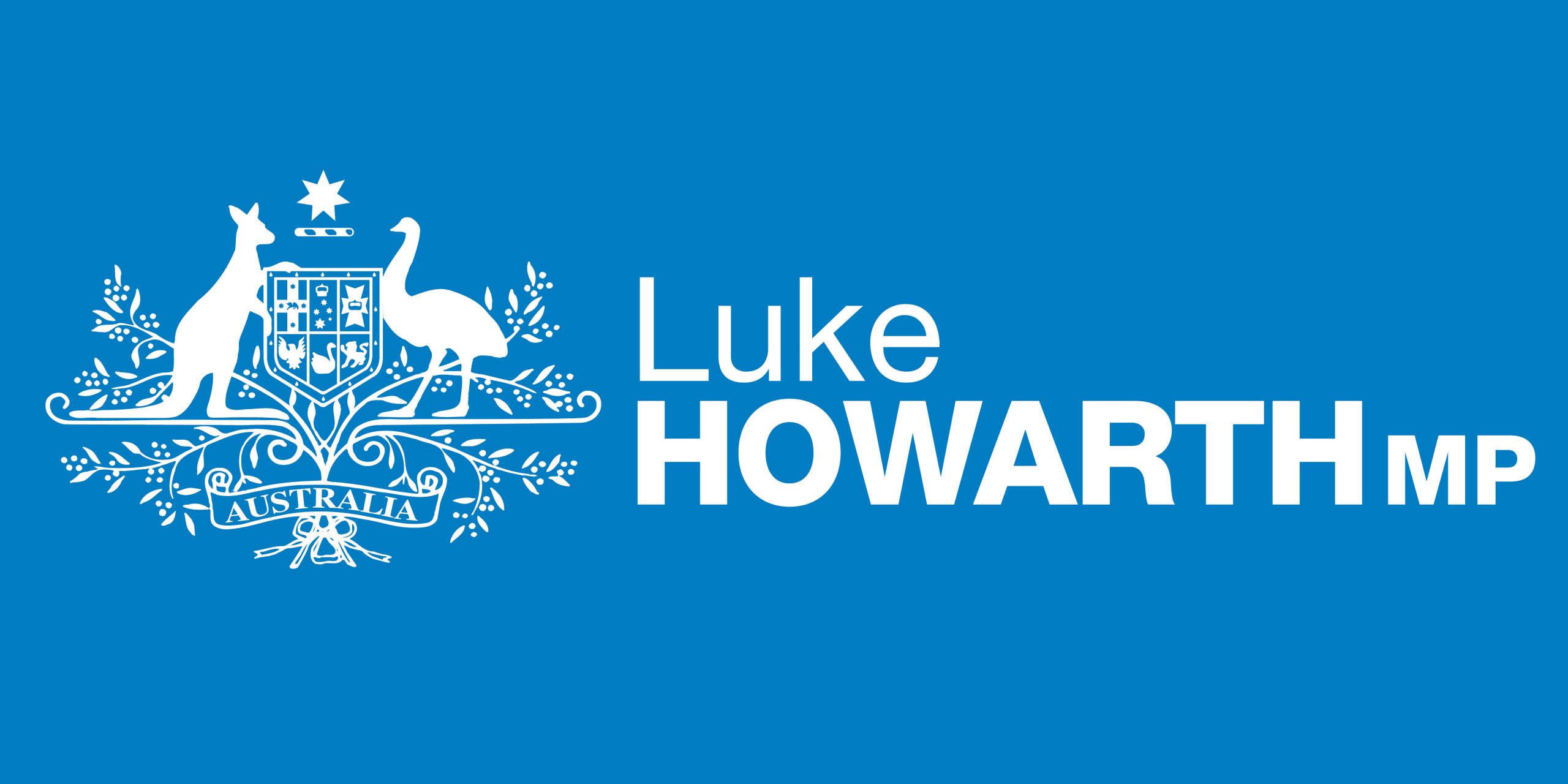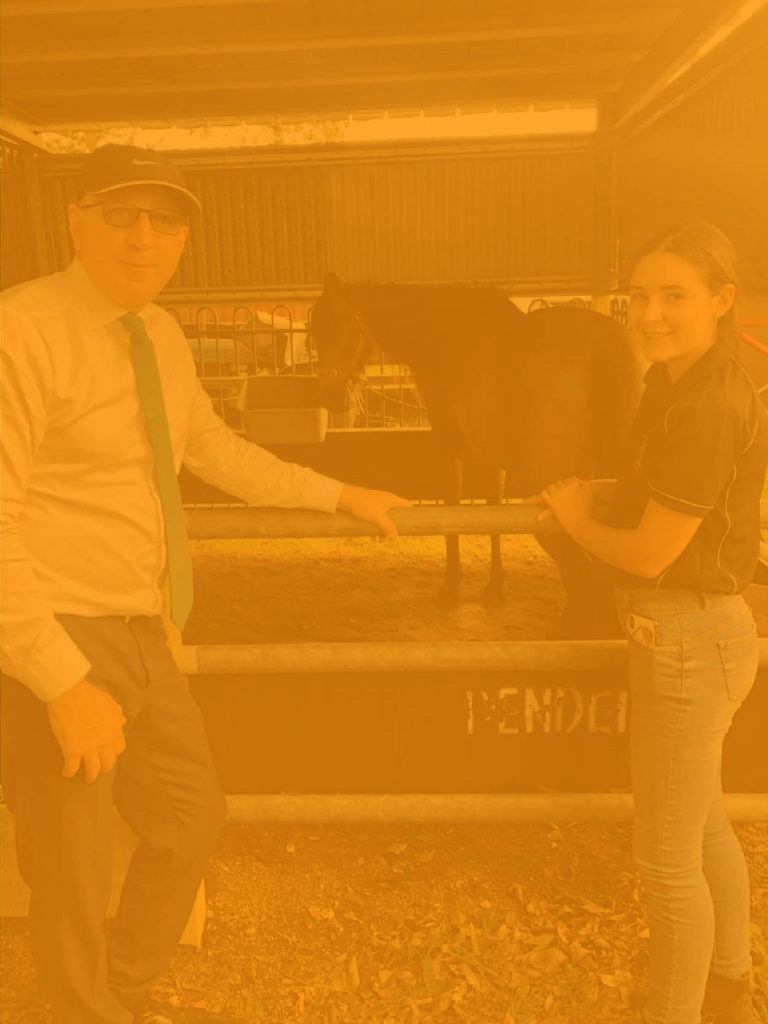Securing Australias recovery
This pandemic is far from over.
Around the world, there are around 800,000 new cases per day. The global economic environment remains uncertain. The euro area has fallen back into recession. But, Australia is now well on the road to recovery. Employment is at a record high, with 75,000 more Australians in jobs than before the pandemic. This Budget is about securing the recovery and setting Australia up for the future.
It includes:
- Tax cuts to put more money in people’s pockets.
- Business incentives to unleash a further wave of investment.
- New apprenticeships and training places to get more Australians into work.
- A $110 billion infrastructure pipeline to build our nation’s future.
- Record funding to guarantee the essential services Australians rely on. This Budget will ensure we come back even stronger, securing Australia’s recovery.
The Hon. Josh Frydenberg MP, Treasurer
How the budget affects you
Australia has come so far since the height of the pandemic.
Last year, Treasury feared unemployment could reach 15% and the economy could contract by more than 20%.
This would have meant 2 million Australians unemployed.
Today the reality is very different.
In March 2020, just before the pandemic hit, there were 13 million Australians employed. Within the next two months, around 900,000 Australians lost their job.
A year on, the Australian Bureau of Statistics shows there are 13.1 million Australians employed, over 74,000 more than when the pandemic struck.
This makes Australia the first advanced economy to have more people employed than pre-COVID-19.
At 5.6%, unemployment today is lower than when we came to government.
Last year, the economies of the United Kingdom, France and Italy all contracted by more than 8%, while Japan and Canada contracted by around 5%.
Australia’s economy contracted by just 2.5%.
On the health front, the catastrophic loss of life seen elsewhere was averted.
Unprecedented economic support is seeing Australia through the biggest global economic shock since the Great Depression. This has included:
- JobKeeper, which kept 3.8 million people in their job.
- The Cashflow Boost, which supported over 800,000 businesses and not-for-profits.
- Additional payments to millions of pensioners, carers, veterans, and others.
- This was made possible because we entered this crisis from a position of strength.
With more Australians back at work, this year’s deficit is $52.7 billion lower than was expected in last year’s Budget.
As a share of the economy, net debt is around half of that in the U.K. and U.S. and less than a third of that in Japan.
The global economic environment remains uncertain.
Around the world, there are around 800,000 new cases per day.
The euro area has fallen back into recession.
But, Australia is now well on the road to recovery.
We are better placed than nearly any country to meet the challenges ahead.
Our first priority is to keep Australians safe from COVID.
The Morrison Government has committed $20 billion to the vaccine rollout and strengthening our health system in response to COVID.
This Budget is the next step on our economic recovery plan. It includes:
- Tax relief to put more money in people’s pockets.
- Business incentives to unleash a further wave of investment.
- Record funding to guarantee the essential services Australians rely on.
- New apprenticeships and training places to get more Australians into work.
A $110 billion infrastructure pipeline to build our nation’s future.
It is about ensuring we come back even stronger, securing Australia’s recovery.
In last year’s Budget, the Government brought forward stage two of our tax relief plan by two years. As a result:
- the low income tax offset was increased from $445 to $700;
- the 19% threshold was lifted from $37,000 to $45,000; and
- the 32.5% threshold was lifted from $90,000 to $120,000.
This year, we are delivering additional tax relief for over 10 million low and middle income earners by keeping the Low and Middle Income Tax Offset for an additional year.
This will deliver additional tax relief of up to $1,080 for individuals or $2,160 for couples.
These expanded tax cuts are part of a major structural reform to our tax system that will see around 95% of taxpayers face a marginal tax rate of no more than 30 cents in the dollar in 2024-25.
This tax relief rewards hard work and creates jobs.
It means Australians will have more of their own money to spend on what matters to them.
In turn, this stimulates more economic activity, helping local businesses and creating jobs.
Under the Coalition, taxes will always be lower.
8 out of 10 jobs are in the private sector.
A sustainable recovery requires a strong private sector.
Our record investment incentives are filling the order books of the nation.
Over 99 per cent of businesses, employing over 11 million workers, can write off the full value of any eligible asset they purchase.
This has seen their spending on machinery and equipment increase at the fastest rate in nearly 7 years.
The Government is extending the expanded instant asset write off, for small, medium and larger businesses (with a turnover up to $5 billion) until 30 June 2023.
This means for example, a tradie can buy a new ute, a farmer can buy a new harvester and a manufacturer can expand their production line.
Small businesses will also have further opportunities – to buy, sell, deliver and install these assets.
These investment incentives will further expand Australia’s productive capacity and create more jobs.
The Morrison Government is building the infrastructure our economy needs for the future with our 10-year, $110 billion investment pipeline.
This includes $15 billion in additional infrastructure commitments in this Budget, including for:
- The North-South Corridor in South Australia.
- Midland Highway upgrades in Tasmania.
- The Great Western Highway and Newcastle Airport in New South Wales.
- The new Melbourne Intermodal Terminal in Victoria.
- The Bruce Highway in Queensland.
- METRONET in Western Australia.
- Highway upgrades in the Northern Territory.
- Light Rail Stage 2A in the Australian Capital Territory.
This Budget invests a further $1 billion in road safety upgrades to save lives and a further $1 billion in local road infrastructure projects.
Funding for these shovel-ready projects will be provided on a use it or lose it basis.
Through the Building Better Regions Fund, a further $250 million of regional community infrastructure projects will be supported, creating more jobs.
The Morrison Government is investing $1.2 billion in our Digital Economy Strategy.
- This includes establishing a new national network of Artificial Intelligence Centres to help drive business to adopt these new technologies.
- Undertaking a digital skills cadetship trial combining workplace and vocational training.
- Expanding our cyber security innovation fund to train the next generation of cybersecurity experts.
Australia’s manufacturing sector will be a key driver of future jobs and higher wages.
The Morrison Government has already committed $1.5 billion to expand manufacturing activity and create jobs across six priority areas, including: food and beverage manufacturing; resources technology and critical minerals processing; medical products; recycling and clean energy; defence industry; and space industry.
This is being backed with an additional $2 billion in R&D tax incentives.
Australia has led the world with innovations like WI-FI, the bionic ear and a vaccine for cervical cancer.
To see more innovation commercialised in Australia, the Morrison Government is launching a new ‘patent box’ starting on 1 July next year.
Under the patent box, income earned from new patents developed in Australia, will be taxed at a concessional 17% rate.
The patent box will apply to the medical and biotech sectors, with consultation on expanding it to the clean energy sector.
Australia’s effective management of COVID makes us an even more attractive place for the best and brightest from around the world.
To take advantage of this, the Government is:
- streamlining visas to target highly skilled individuals when circumstances allow.
- improving Australia’s competitiveness as a financial centre in the region.
- simplifying our tax laws, including the treatment of employee shares in line with the rest of the world.
When construction work began to dry up, HomeBuilder came to the rescue.
New house starts are now the highest in 20 years.
New loans to first home buyers reached their highest level in nearly 12 years.
HomeBuilder has been a huge success and the Government’s $2 billion investment in affordable housing is bringing on more supply.
In this Budget, the Government is further encouraging home ownership, by:
- Helping another 10,000 first home buyers build a new home with a 5 per cent deposit.
- Increasing the amount that can be saved for a home deposit through the First Home Super Saver Scheme from $30,000 to $50,000. This enables first home buyers to save faster and build a larger deposit, with concessional tax rates.
- Supporting 10,000 single parents to purchase a home with a 2 per cent deposit.
Small businesses have been a primary focus on economic support measures during the pandemic, including JobKeeper, Cashflow Boost payments, 50% wage subsidies for apprentices and the HomeBuilder program.
The Coalition Government has also backed small businesses – reducing the company tax rate for firms with a turnover up to $50 million, from 30% in 2015-16 to 26% in 2020-21 and a further reduction to 25% in 2021-22.
Some sectors continue to do it tough.
That’s why this Budget provides a further $2.1 billion in targeted support for aviation, tourism, the arts and international education providers. This includes:
- More than 800,000 half-price airfares.
- Grants to English language course providers.
- Support for more than 200 productions.
The Morrison Government is extending the small business loan scheme, which has already helped more than 45,000 businesses access low-cost finance.
Tax relief is being provided for around 1,000 small brewers and distillers.
The Government is also providing small business with peace of mind that an independent umpire will stand between them and the ATO when it comes to debt recovery actions.
This will help take these disputes out of the courts.
Small businesses have been a primary focus on economic support measures during the pandemic, including JobKeeper, Cashflow Boost payments, 50% wage subsidies for apprentices and the HomeBuilder program.
The Coalition Government has also backed small businesses – reducing the company tax rate for firms with a turnover up to $50 million, from 30% in 2015-16 to 26% in 2020-21 and a further reduction to 25% in 2021-22.
Some sectors continue to do it tough.
That’s why this Budget provides a further $2.1 billion in targeted support for aviation, tourism, the arts and international education providers. This includes:
- More than 800,000 half-price airfares.
- Grants to English language course providers.
- Support for more than 200 productions.
The Morrison Government is extending the small business loan scheme, which has already helped more than 45,000 businesses access low-cost finance.
Tax relief is being provided for around 1,000 small brewers and distillers.
The Government is also providing small business with peace of mind that an independent umpire will stand between them and the ATO when it comes to debt recovery actions.
This will help take these disputes out of the courts.
The Government has now doubled school funding since coming to office.
The Morrison Government’s focus is on lifting student outcomes and better equipping teachers.
In this Budget, $2 billion is being committed to fund preschools, with reforms to improve participation.
This Budget also provides more than $19 billion in funding for our universities in 2021-22.
As a result of decisions made during the pandemic, there are 30,000 more places at Australian universities this year.
Childcare is an important driver of higher workforce participation and women’s economic security.
In this Budget, the Morrison Government is making a further, targeted investment in childcare to increase the affordability of childcare for low- and middle-income families.
Starting on 1 July 2022, the Government will increase the Child Care Subsidy for families with more than one child aged five and under in child care.
For families with more than one child in child care, the level of subsidy received will increase by 30% to a maximum 95%.
This will benefit around 250,000 families, by an average of $2,200 per year.
The Morrison Government will also remove the $10,560 cap on the Child Care Subsidy. This will benefit around 18,000 families.
It is estimated these changes will result in around 40,000 mums or dads being able to work an extra day per week.
This additional support is part of the Morrison Government’s plan to support families and secure our economic recovery.
The Government’s first priority is to keep Australians safe from COVID.
In this Budget, a further $1.9 billion is allocated for the roll out of vaccines.
It also provides another $1.5 billion for COVID-related health services, including for testing and tracing, respiratory clinics and telehealth.
In total the Morrison Government has committed $20 billion to the vaccine rollout and to strengthen our health system in response to COVID.
In this Budget, the Government is providing record funding for hospitals, Medicare, mental health, and aged care.
Since 2013, the Coalition Government has listed more than 2,600 medicines on the PBS, an average of one each day.
This has put life-changing treatments within the reach of every Australian.
In this Budget, we fund new medicines to treat breast cancer, lung cancer, severe osteoporosis, severe asthma and chronic migraines.
In this Budget, the Government is also providing new funding for endometriosis, research into pre-term birth and genetic testing for pregnant women.
This Budget is also providing higher incentives to rural and regional GPs for bulk billed services, helping to keep more doctors in the regions.
Suicide is the leading cause of death in those aged 18 to 44.
Tragically, over 65,000 of our fellow Australians attempt to take their own lives each year.
The Government has nearly doubled spending on mental health since 2013.
This includes more resources in each Budget for front line services, including BeyondBlue, Lifeline and Kidshelpline.
This Budget makes a further $2.3 billion commitment to mental health care and suicide prevention. It includes:
- More Headspace centres to support more young Australians.
- A new National Suicide Prevention Office.
Expanding this model to those aged over 25, with a new Head to Health national network of 40 centres.
Increased funding for the treatment of eating disorders.
Greater access to psychiatrists, psychologists and GPs through Medicare.
Universal access to care for people who have been discharged from hospital following a suicide attempt.
As the Prime Minister has announced, there will be a Royal Commission into Defence and Veterans Suicide.
One in four women experience violence from a current or former partner.
We must do more to end all forms of violence against women and children.
This Budget invests a further $1.1 billion in women’s safety. It includes delivering:
- More emergency accommodation.
- More financial support, including cash payments for those escaping abusive relationships.
- More legal assistance.
- More counselling.
More targeted services for Indigenous, migrant and refugee women and women with disability.
The Government will improve the family law system to better protect children, give victims of domestic violence greater access to justice and reduce time spent in court.
In its response to the Respect@Work Report, the Government is strengthening laws, guidance and standards to prevent and address harassment.
The NDIS has made Australia a better country, profoundly improving the lives of people with disability and their families.
Today, 450,000 people are receiving disability support – ranging from a new wheelchair, home modifications, care in the home and transport to work.
In the last year alone, more than 100,000 have joined the scheme.
In this Budget, a further $13.2 billion over four years is being invested to meet the needs of Australians with disability.
As the scheme reaches maturity, the Government’s focus is on ensuring its sustainability and that it continues to deliver a high quality essential service for those who need it.
Under the Coalition, the NDIS will always be fully funded.
The Government wants all Australians to get the most out of the superannuation system.
On average women retire with less superannuation than men.
The Government will remove the current $450 per month minimum income threshold for the superannuation guarantee.
This will improve economic security in retirement for around 200,000 women.
The Government is also making it easier for Australians to prepare for – and be more secure in – their retirement.
To improve flexibility, older Australians will no longer be required to meet a work test before they can make voluntary contributions to superannuation.
Those aged over 60 will be allowed to contribute up to $300,000 into their superannuation if they downsize their home. This will also free up more housing stock for younger families.
The Pension Loan Scheme will also be enhanced by providing immediate access to lump sums of around $12,000 for singles, and $18,000 for couples.
Under the Coalition, Australian seniors will always have more control over their money.
To keep Australians safe from these threats — whether domestic or foreign — the Government is providing an additional $1.9 billion over the decade to strengthen our national security, law enforcement and intelligence agencies.
To be prepared for a world that is less stable and more contested, the Government is investing $270 billion over 10 years in our defence capability.
Australia is playing its part on climate change, having met our 2020 commitments and is on track to meet and beat our 2030 target.
Australia’s emissions are now 19% lower than in 2005 and at their lowest level since 1995.
Australia is on the pathway to net zero and our goal is to get there as soon as we possibly can, preferably by 2050.
We will do this with a practical, technology-focused approach. Technology not taxes.
Already, we have the highest uptake of rooftop solar in the world and are supporting major energy storage projects like Snowy 2.0 and Battery of the Nation.
In this Budget, we are investing a further $1.6 billion to fund priority technologies, including clean hydrogen and energy storage.
Our approach will strengthen the economy, create jobs and reduce emissions.
This Budget also provides over $480 million in new funding for the environment, including $100 million to protect our oceans.
The Morrison Government is also investing in upgrading our recycling capabilities, creating jobs and reducing waste sent to landfill.
This Budget provides more resources to help Australians prepare, respond and recover from these natural disasters, including:
- Funding from our $3.5 billion National Water Grid Fund to make regional Australia more resilient to drought, building dams and irrigation projects.
- A new National Recovery and Resilience Agency to lead our response to natural disasters.
- A $10 billion government guarantee to make insurance more affordable in Northern Australia.
- More than $600 million for community and household projects to mitigate the impact of natural disasters.
- $170 million to strengthen internet and mobile coverage in regional Australia, particularly in bushfire-prone areas.
Australia’s biosecurity system protects more than $50 billion in agricultural exports and 1.6 million jobs from threats like African Swine Fever.
This Budget will strengthen border screening controls and improve our ability to fight an outbreak.
The Government is also providing additional support for Australian manufacturers of critical product and more funding to help small businesses and farmers expand and diversify their export markets.
To help ensure our energy security, with lower emissions, the Government is unlocking Australia’s vast gas reserves in the North Bowen and Galilee Basins, and investing in hydrogen-ready gas plants.
We are also shoring up our fuel security by helping local refineries to keep operating in Australia.




